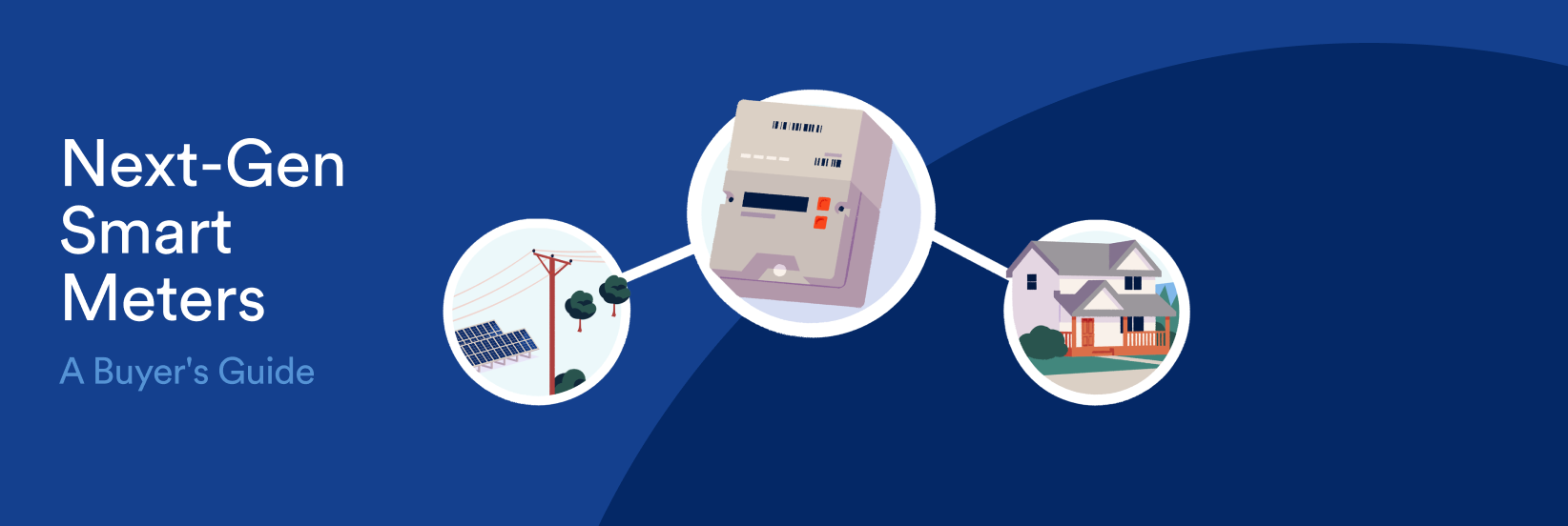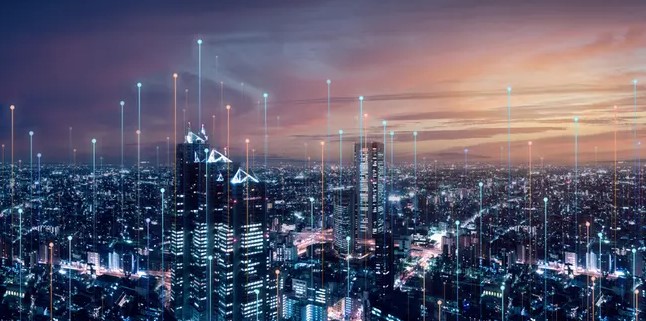4 Things You Need to Know Before You Select Your Next Smart Meter
Making an investment in technology is never easy. But when that technology is expected to last 15+ years, like smart meters, the stakes are much higher.

Making an investment in technology is never easy. But when that technology is expected to last 15+ years, like smart meters, the stakes are much higher. After all, the energy transition will happen during the lifespan of meters being installed now. It’s a critically important decision. Make the wrong meter choice and you may not be able to adapt to the needs of the changing energy landscape.
It’s a lesson that is still fresh in the minds of utility decision makers after first-generation smart meters fell well short of their promises. And while there have been some incremental improvements to meters that have come to market since, a revolution in smart meter technology has arrived. Next generation meters have changed the role of smart meters from data collection devices to a distributed platform powered by software, capable of transforming how we manage the grid.
So what exactly makes a smart meter a ‘Next-Gen’ smart meter? Turns out the devil is in the details. Here are the four areas where you’ll want to go deep on capabilities:
- Data
- Computation, memory, and storage
- Networking
- Software and security

During the initial transition to smarter metering, the change from monthly to 15-minute interval data overwhelmed utilities and left them with very little actionable insight. But the lesson from today’s AI revolution is that through the power of data we can see and act on trends that have previously been hidden. The latest generation of large language models (LLMs) are trained on millions of times more data than the language models of a decade ago – allowing these latest models to capture a wide range of knowledge and context. Imagine what would be possible with the same sort of data increase in the energy space!
Today we have Next Gen meters on the market with embedded intelligence that can process 50 million times as much data as the 15-minute interval data provided by first generation smart meters. This dramatic increase in data enables a detailed, real-time view of devices in homes (real-time load disaggregation) as well as a real-time view of the entire distribution grid. High resolution, real time data sampling enables both the detection and the localization of operational issues on the grid by analyzing small variations in voltage and current waveforms (e.g. transformers arcing, vegetation hitting power lines, etc.)
To ensure your Next Gen meter can provide these consumer and grid side benefits, it should have:
- Continuous sampling of voltage and current waveforms with at least 15,000 samples per second
- Raw energy data to be available to the application processor – not just summary information
- Synchronous voltage and current sampling
- Linear quantization, with 16 bits or greater for current and 14 bits or greater for voltage
So, What is Real Time?
On the surface, understanding the term “real time” should be intuitive. We experience it every day. Google maps doesn’t tell us about traffic from an hour ago or even 15-minutes ago, but rather what’s going on right now.
For consumers to be able to relate to what is happening in their home, the delay between when they do something (turn on a device in their home) and when it shows up in an application, should ideally be less than a second and certainly no more than two or three seconds. Beyond this consumers can’t associate what they are seeing in an application with what is actually happening in their homes.
For grid-side functionality, there is a broad range of what it means to be “real-time”. For grid planning and operations, in many cases delays of minutes are acceptable but the value of the grid insights increases with less delay. For things like downed wire detection and cutoff, delays need to be in the hundreds of milliseconds, and for grid services of DERs delays need to be no more than a few milliseconds.


With 50 million times the data of first generation meters, there is no practical way to send all the data to a utility or service provider. The answer is to no longer think of meters as data collection devices and instead move much of the processing and intelligence to the edge. The good news is that the mobile phone industry, with billions of smartphones now on the market, has driven the computation capabilities and energy efficiency of processors way up, while driving costs way down. The current processors include hardware accelerators which are able to run AI models locally and are able to handle the high data rates needed.
Next Gen meters leverage these latest processors and a distributed software model where much of the processing happens locally on the meter combined with networking and cloud-side processing where appropriate. To do this, you need sufficient levels of computation and memory on the meter itself.
Your Next Gen meter should have a minimum of:
- 1000 DMIPS CPU processing power
- 256MB RAM memory
- 1GB Flash or other storage

The distributed computing model outlined above allows for much reduced network needs, but there are still use cases dependent on networking capabilities. For many use cases, the existing utility networks are sufficient. But, for use cases that require a larger amount of data, or need real-time interaction, the network needs go beyond the existing utility networks.
Current Next Gen meters handle this by including WiFi support (so, consumers can connect to their home WiFi, or the meters could connect to public WiFi networks) and in the future, could do this with cellular networks. Either approach works as long as these requirements are met:
- 30-100MB per day data transfer (from meter to cloud) – non real-time
- Low latency (< 750 ms round trip) needed for real-time applications with < 1 kbyte per second needed during real-time use
- Access to local home network for communicating with other smart home devices

The energy landscape is changing rapidly. So is technology. Just like it was hard to imagine in 2008 today’s revolution in AI and machine learning, it’s hard to predict exactly what the future will hold. We don’t know all the things which will change as we scale up the capacity of the grid. But, we do know that the energy transition will be happening during the lifetime of meters being deployed today. So it’s essential to plan for the long-term.
If we shift the thinking to meters as platforms for software which can be upgraded over time, we can support these evolving needs in an affordable way. But, the meters and the software environments need to be capable and secure.
To support modern software stacks (including the support for machine learning and AI), meters need:
- Ability to update software over the air
- Native-level access to core computation resources
- Support for multi-threading
- Security to protect meter functions from consumer software and to provide data privacy for consumer data
Conclusion
While the requirements above are a big leap compared to first generation meters, they are conservative compared to the latest generations of edge computing available in mobile phones and other devices. This is mature technology and can form the basis for meters which can be upgraded with software throughout their lifetimes.
Watch out for solutions framed as ‘good enough’ or ‘near real-time’ with partial or summary data or compute power that hamstrings utility decisions on how to use that data.
Remember, meters deployed today need to last through the energy transition, and small incremental investments in data and computing power now, will pay off later. While the technology will always be advancing, by getting this right you can help your utility continue to evolve with a solid platform that will support the needs of the energy transition.

